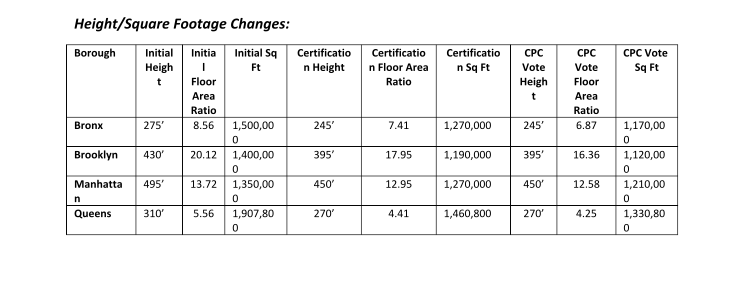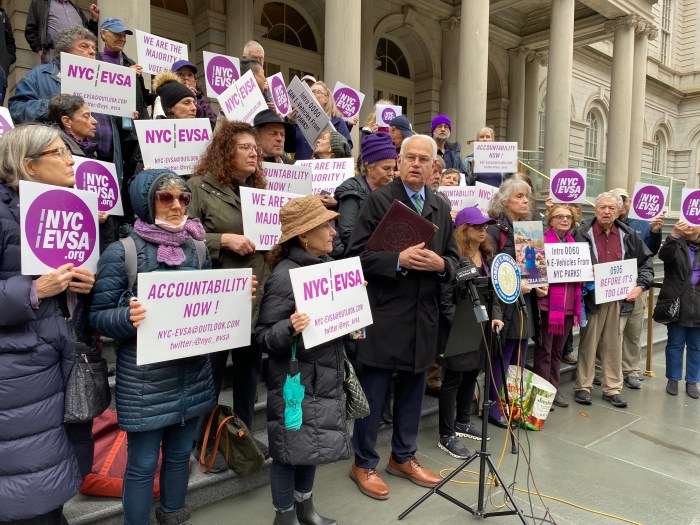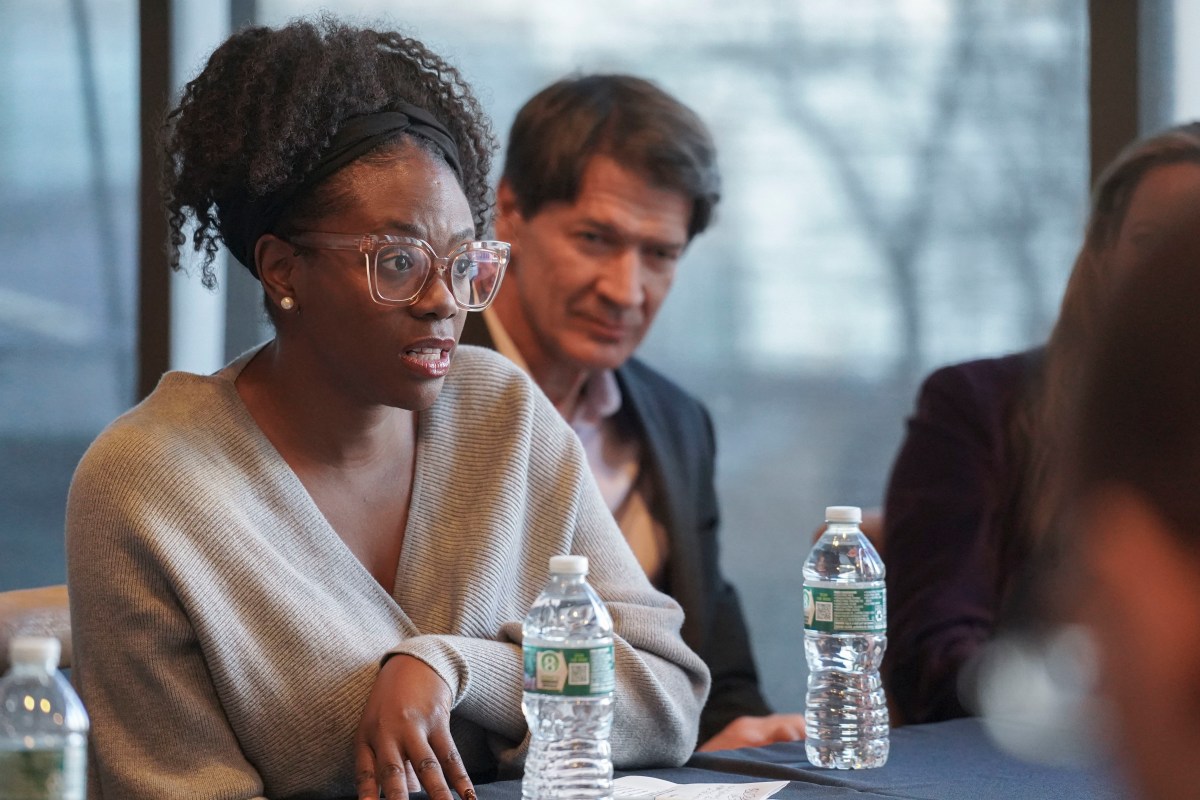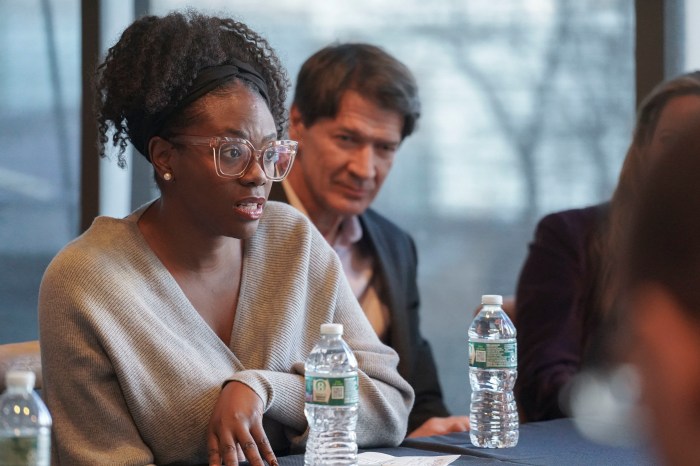BY ALEJANDRA O’CONNELL-DOMENECH | The City Planning Commission voted 9 to 3 in favor of Mayor de Blasio’s borough-based jail system on Tuesday, despite vocal opposition from members of prison-abolition group No New Jails NYC.
The City Council now has 50 days to vote on the plan. Under the scheme, Rikers Island’s jail complex would be closed, to be replaced by the creation of four new jails in Manhattan, Queens, Brooklyn and the Bronx.
The City Council will hold a hearing on the plan at City Hall this Thurs., Sept. 5, at 10 a.m.
“Today’s vote is so much more than a vote on site selections and special permits,” said Marisa Lago, the City Planning Commission chairperson. “It’s a vote to end a bleak era in New York City history.”
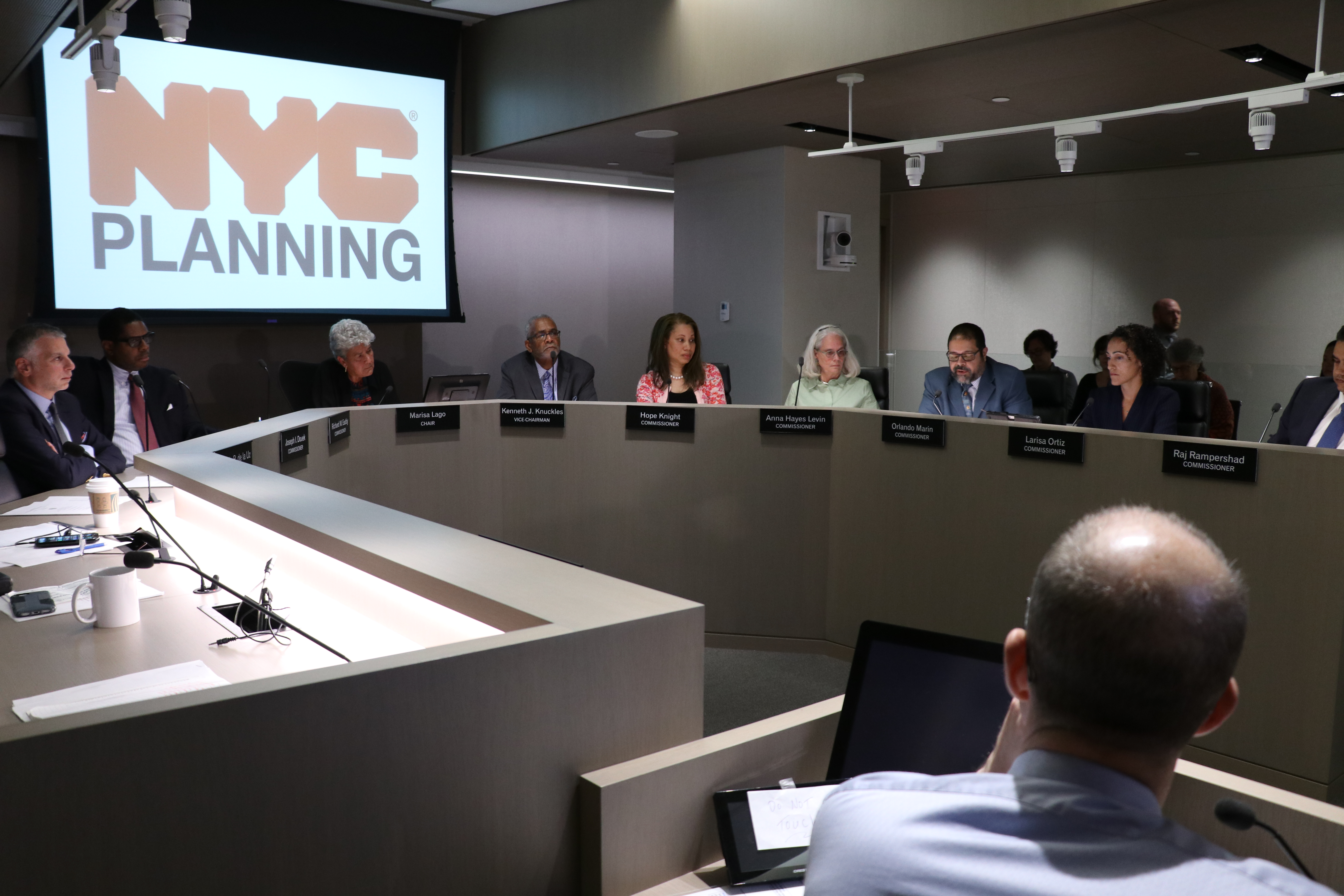
Two years ago, de Blasio announced his plan to close Rikers and move detainees closer to courts and families in almost every borough. Jails are slated to open next to court houses within four of the city’s five boroughs. Inmates in Staten Island will be shipped to the Brooklyn facility.
In Manhattan and Brooklyn, facilities will open where there are already existing detention centers: at 125 White St. near City Hall and at 275 Atlantic Ave. in Boerum Hill, respectively. However, inmates at the Brooklyn detention center would have to be sent to Rikers at the end of the year as the new facility is built, according to THE CITY. In Queens, a facility in Kew Gardens will be torn down and rebuilt. The Bronx facility in Mott Haven would be built on the site of current New York Police Department tow pound.
Retooling the prison system is a part of de Blasio’s larger plan to shrink the city’s jail population from 7,000 inmates to 4,000 by 2026.
During the vote, members of No New Jails NYC shouted, “There is no justice with this plan!” and “You have blood on your hands!” to City Planning commissioners who supported the idea. Others shouted that commissioners did not care about black and brown lives and equated supporting the plan to supporting white supremacy. Opponents of the borough-based jail system argue that the city needs to look at other ways to end incarceration.
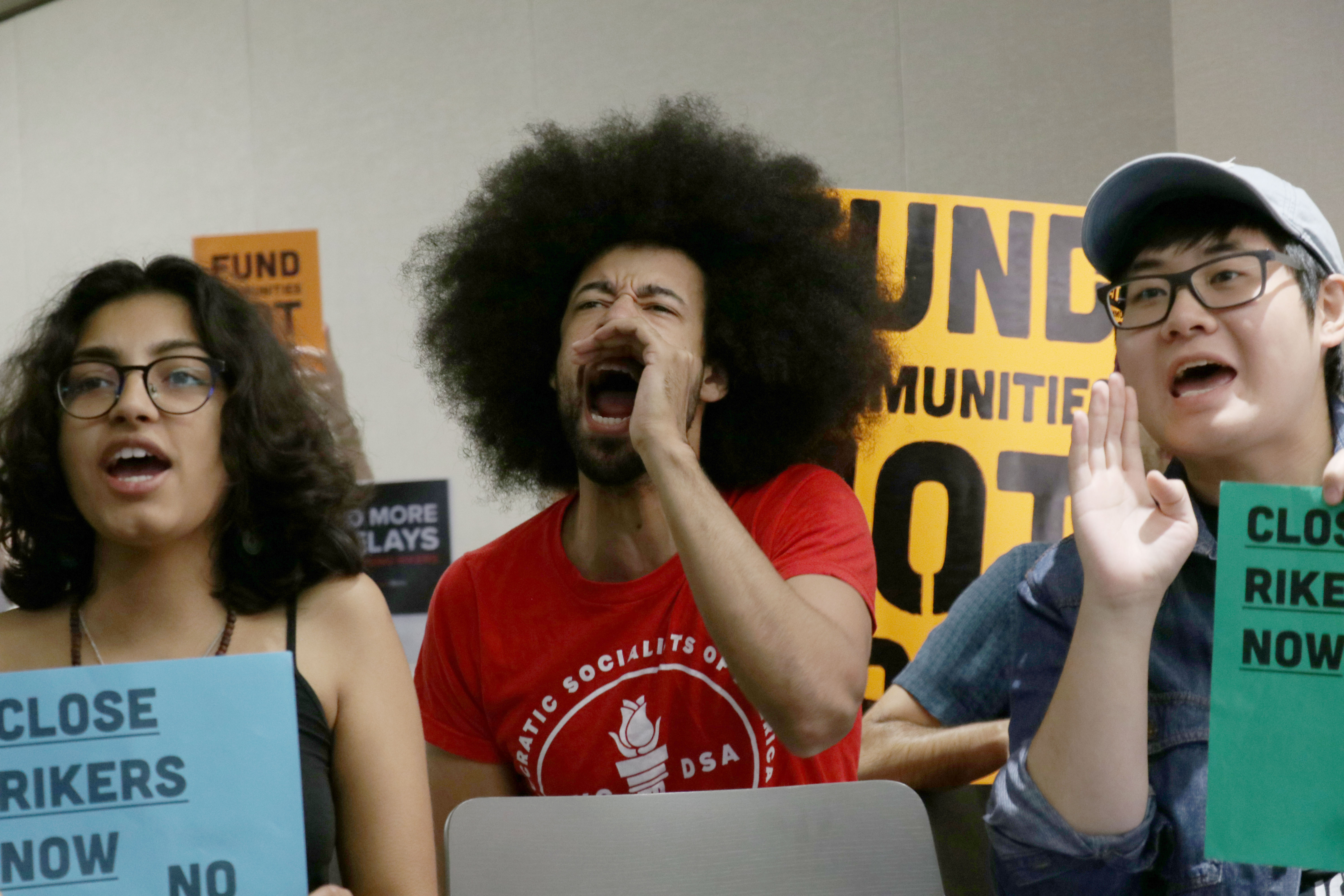
Other shouts of “Close Rikers now!” could be heard between cries of “No more jails!” Activists from Close Rikers Now, who support the mayor’s plan, also crowded into the jam-packed hearing room.
Harvey Murphy, a member of Just Leadership to End Rikers Island, said he was formerly incarcerated at the jail complex and was damaged by the experience.
“Rikers Island has harmed a lot of people, it’s harmed me,” Murphy said. “I don’t think I’ll will be alive to see abolition but I’m alive to see reform; we have to start within there.”
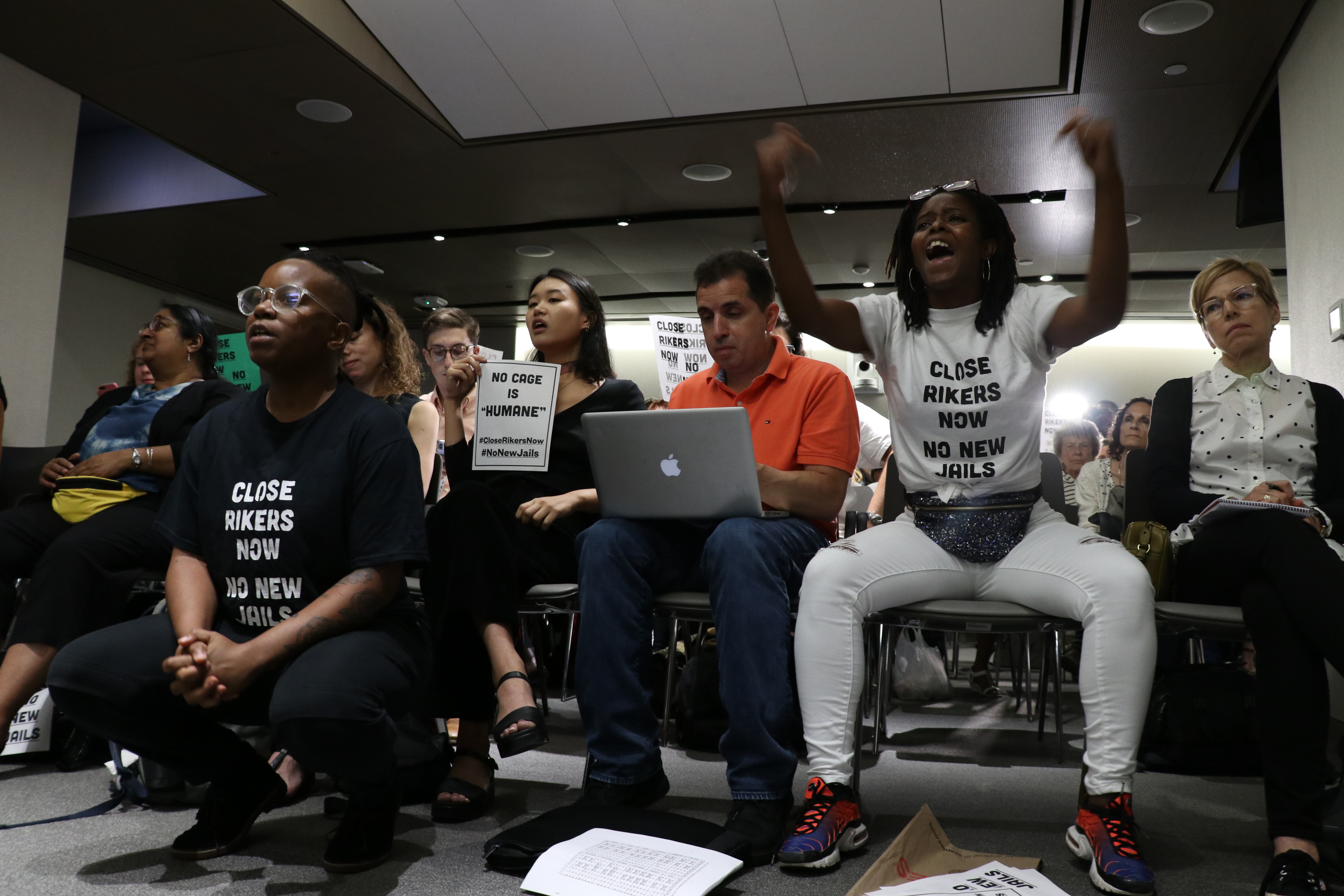
“When you are voting to build these new jails, you are voting to continue to incarcerate 90 percent black and brown folks,” said Kei Williams, a member of No New Jails NYC.
Opponents of the plan argue that the substitute jails would only continue to hurt New Yorkers and that the city should find ways to end incarceration completely.
After the vote, the City Planning Commission released modifications made to the proposed jails’ designs. All four facilities have had “setbacks” added — moving them back from the street wall — intended to increase light and air in the surrounding neighborhoods. For the Manhattan facility, the height of the White St. arcade walkway has been increased from 29 feet to a minimum height of 55 feet, which would allow more light to pass through the arcade, according to a statement.
For the Brooklyn facility, C.P.C. called for the removal of the State St. skybridge and an increased transparency requirement for retail and community spaces from 30 percent to 50 percent near the new jail. This was done to ensure “active and inviting streetscapes for pedestrians.”
C.P.C. also voted to reduce the heights of all the planned new Manhattan, Queens, Bronx and Brooklyn jails — to 450 feet, 270 feet, 245 feet and 395 feet, respectively. Initially, the jails were going to be 495, 310, 275 and 430 feet tall. Each jail’s floor area ratio, or F.A.R., has also been lowered a bit, which would reduce the maximum square footage that could be built.
